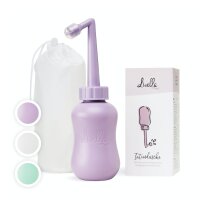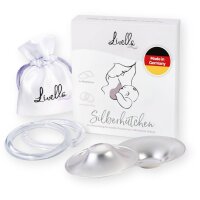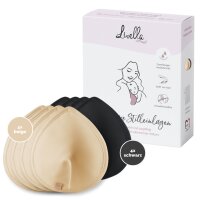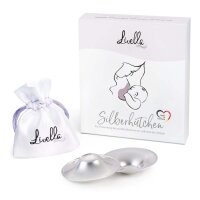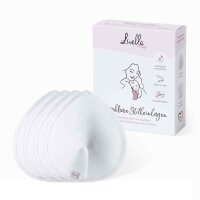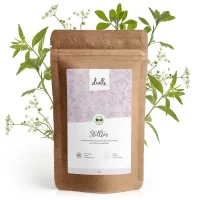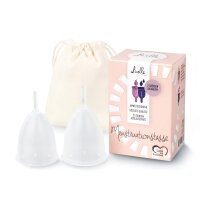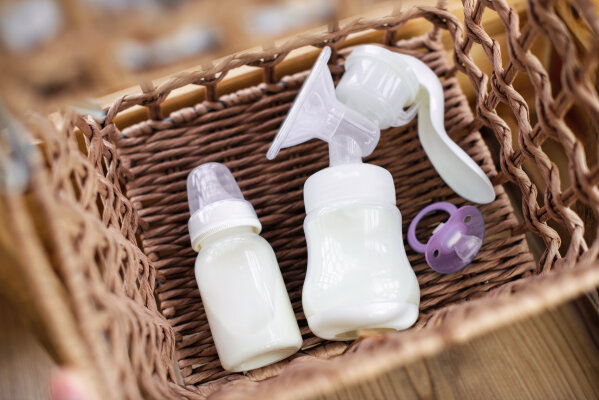Perceived insufficient milk supply is one of the most commonly cited reasons why women stop breastfeeding. In many cases, however, the fear of not having enough milk to nourish their baby is unwarranted. And even if milk production is a bit slow or if there is a decrease in milk supply, it’s usually possible to reverse this development with the help of some simple techniques.
In this blog post, we’ll tell you if low milk supply is normal in the beginning of lactation and we’ll show you how to increase your milk supply in a natural way. But first of all, let’s take a look at how milk production works and how much breast milk your newborn actually needs.
Table of contents
How does milk production work?
How much milk does my baby need?
Is it normal to have low milk supply in the beginning?
How to increase breast milk: Factors that affect milk production
How to increase milk supply naturally
Not enough breast milk despite trying to increase milk supply?
Final thoughts on how to increase breast milk
How does milk production work?
The female body starts preparing for breastfeeding already during pregnancy. Tender breasts usually indicate that the mammary glands are developing and that additional breast tissue is being produced. Milk production then sets in at some point in the second trimestre.
The changes in the mother’s body are triggered through changing levels of certain hormones, two of which are also responsible for milk production. In the beginning, milk supply is solely regulated through the hormones progesterone and prolactin. While the level of the former drops, the level of prolactin, which is the milk-forming hormone, rises. After a couple of days, milk production follows the principle of supply and demand. This means that the body only continues producing milk when the breasts are drained on a regular basis.
Milk supply might seem very low the first few days after birth, but you shouldn’t forget that the so-called colostrum, which is the initial breast milk, is very rich and nutritious. Even small amounts of it are enough to supply your baby with all the nutrients he or she needs to develop well.
Sometime between the first and the third day after birth is when the milk “comes in”. That’s what it’s called when the body gradually begins to switch from colostrum to mature milk. During this transition, it’s particularly important to breastfeed frequently to get milk production off to a good start.

How much milk does my baby need?
As mentioned before, milk production follows the principle of supply and demand. This means that the female body usually produces as much milk as the baby needs. Despite this self-regulation mechanism, many mums wonder how to increase their milk supply. But before taking any measures to up milk production, it’s important to know how much milk newborns actually need.
Every baby’s needs are different, especially when it comes to feeding and breast milk intake. There are many factors that influence how much milk a baby needs, including age, size, gender and whether they are currently in the middle of a growth spurt or not. So the daily intake can vary greatly.
Is it normal to have low milk supply in the beginning?
Especially when they first start breastfeeding, many mothers are concerned that they might not have enough milk for their baby. So much so that 35% of all women who wean their baby early do so because they perceive their breast milk supply as insufficient—with cessation rates being especially high between weeks 1 and 4 of breastfeeding. But is low milk supply really a problem in the first couple of weeks?
Until the production of mature milk sets in, the female breast only produces very small quantities of colostrum. This is normal and shouldn’t worry you since colostrum is a lot thicker and very rich in nutrients and antibodies. This means that even small amounts are enough to keep your baby going for the first days.
As soon as the body starts producing transitional milk (the stage before mature milk), however, milk supply should increase. If this doesn’t happen automatically, you can take action to boost your milk supply. In the next sections, we’ll tell you how to increase breast milk supply naturally.
Read more about low milk supply, its causes and supplementing breast milk with infant formula in our related blog post.
How to increase breast milk: Factors that affect milk production
In order to understand how to increase breast milk, we first have to know what factors affect milk supply. There are many different things that can have an impact on how much milk is produced. They include:
- Breastfeeding frequency: The more often you let your baby latch on, the more milk your body will make.
- Weak suck or wrong technique: A weak suck will prevent your baby from draining your breast properly, which means that the body produces less milk to replace what’s been removed. The use of dummies can further have a negative impact on your baby’s latch-on technique.
- Skin-to-skin contact: Skin-to-skin contact not only activates your baby’s natural breastfeeding reflexes, but it also promotes the release of hormones that are crucial for breast milk production.
- Feeding infant formula: If you feed infant formula in addition to breast milk, your baby won’t feed as much on the breast, which suggests to your body that the current breast milk supply is too high.
How to increase milk supply naturally
Now that we know what factors influence milk supply, it’s time to answer the question of how to increase breast milk. There are many different things you can do to get your body to make more milk. Here are some practical tips you can start implementing straightaway:
- Good attachment and positioning: A good breastfeeding latch enables the baby to feed properly and really empty your breast, which is an important signal to the body that more breast milk is needed.
- Frequent breastfeeding: If you feed your baby frequently (i. e. at least eight times within 24 hours), your body will respond by producing more milk.
- Switching sides: Letting your baby feed on both sides is another way of increasing milk supply. You can either offer both breasts during one feeding session or switch to the other breast for the next one.
- Avoiding the use of dummies: Since offering dummies or feeding your little one with a bottle can interfere with their ability to latch on properly, it’s best to avoid using any of those.
- Increasing skin-to-skin contact: Since skin-to-skin contact is crucial for releasing the hormones that regulate milk supply, spending as much time in close contact with your baby is definitely an answer to the question of how to increase milk supply.
- Extracting breast milk by hand or with a pump: In order to increase your milk supply, you can also extract remaining breast milk by hand or with a breast pump. This allows you to drain your breast completely and stimulate milk production. You can then feed the expressed breast milk to your baby.
- Choosing a suitable breastfeeding position: All mother-baby couples have their preferences when it comes to breastfeeding holds. But there are some breastfeeding positions that allow for better draining of the breasts. If you want to up your milk supply, you should give these positions a try.
- Stimulating the let-down reflex through warmth: The let-down reflex is responsible for making your milk flow, which means that your breasts don’t get drained properly if this reflex isn’t triggered. In order to stimulate let-down, you can place a warm compress or breast gel pad on your breast for a couple of minutes before each feed.
- Drinking lactation tea: Many mothers wonder what to drink to increase breast milk. Lactation teas combine various herbs that are meant to help you produce more breast milk. For instance, our Livella herbal breastfeeding tea combines lemon verbena and fenugreek with other organic herbs.
- Eating a healthy, balanced diet: While there is no scientific evidence that there are special foods to increase milk supply, having a well-balanced, healthy breastfeeding diet is definitely a factor that can have a positive impact on your body’s milk production.
Not enough breast milk despite trying to increase milk supply?
If, after following all these tips on how to increase milk supply, you still think that your body doesn’t produce enough milk to nourish your baby, you should consult your midwife or talk to a lactation consultant. They can verify that you’re latching on properly and check whether your baby is growing and gaining weight at a normal pace.
As a next step, you should seek advice from your doctor to see if the causes for your low milk supply are of anatomical or hormonal nature. If the latter is the case, your doctor can prescribe so-called galactogogues, the most common one being domperidone. Domperidone will make the prolactin levels of your body go up, which should get your body to produce more milk.
Final thoughts on how to increase breast milk
The fear of not producing enough breast milk is very common among young mums. However, it’s important to remember that milk supply is very often only perceived as insufficient. As long as your baby develops well and gains weight, there is nothing to worry about.
If this is not the case, you can try different things to improve your milk supply, starting with ensuring that your baby latches on properly and increasing breastfeeding frequency. The better and the more frequent your breast is drained, the faster your body will start producing more milk.
Additional pumping or expressing milk by hand can also help increase milk supply, as can eating a healthy diet and drinking lactation tea. If none of this helps, you can see a doctor to discuss the use of prescription medications such as domperidone.
References
- How to increase your milk supply - La Leche League GB
- How milk production works - La Leche League GB
- Milk supply - Start for Life - NHS (www.nhs.uk)
- Maternal Perceptions of Insufficient Milk Supply in Breastfeeding - PMC (nih.gov)
- Low milk supply | The Royal Women's Hospital (thewomens.org.au)
- Domperidone for increasing breast milk supply (worldssl.net)
- Relactation and Induced Lactation - La Leche League GB
- 19ing-Why-Do-Women-Stop-Breastfeeding.pdf (amamantarasturias.org)




